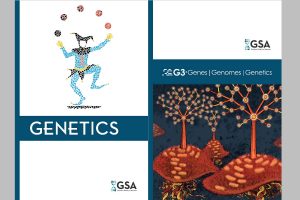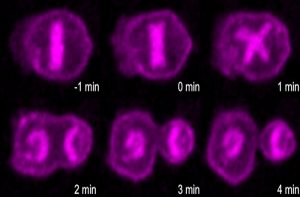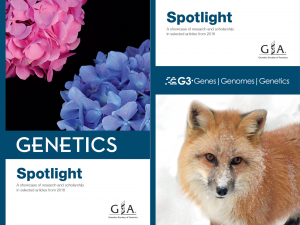Enter your address to receive notifications about new posts to your email.
Articles tagged Genetics Journal
(331 results)
-
Genetics Society of America partners with Oxford University Press to publish journals
Oxford University Press (OUP) and the Genetics Society of America (GSA) are pleased to announce that OUP will publish the GSA journals GENETICS and G3: Genes|Genomes|Genetics beginning January 2021. GENETICS is a peer-reviewed, peer-edited journal with an international reach and increasing visibility and impact. Since 1916, GENETICS has published high-quality, original research presenting novel findings…
-
GENETICS welcomes new editors
GENETICS is excited to announce five new editors: Needhi Balla, Victoria Meller, Houra Merrikh, Yi Rao, and Yikang Rong. Needhi Balla University of California, Santa Cruz Needhi Bhalla received her B.A. at Columbia College and her Ph.D. at University of California, San Francisco, and she performed her post-doc training at…
-
GSA Journals Spotlight 2019
The GSA Journals, GENETICS and G3: Genes|Genomes|Genetics, are proud to present our annual Spotlight booklets for research published in 2019. Each Spotlight is a showcase of the excellent research and scholarship published over the course of the year, along with a selection of striking images submitted by our authors. Browse the 2019 GENETICS Spotlight. Browse the 2019 G3 Spotlight.
-
Three GENETICS articles from 2019 recognized with Editors’ Choice Awards
Congratulations to the winners of the Editors’ Choice Awards for outstanding articles published in GENETICS in 2019! The journal’s Editorial Board considered a diverse range of articles, finding many papers worthy of recognition. After much deliberation, they settled on one exceptional article for each of the three award categories: molecular genetics, population and evolutionary genetics, and quantitative genetics.…
-
Coffee and epistasis: a scientific story of sips and SNPs
Guest authors C. Brandon Ogbunugafor and Rafael F. Guerrero demystify higher order epistasis through a short story about the perfect brew. Epistasis is the flavor of the month Epistasis is one of the most popular and provocative topics in modern genetics. It has many different definitions, but one especially useful one is that epistasis is…
-
Finding fresh mutations
Improved duplex sequencing identifies spontaneous mutations in bacteria without long-term culturing. Spontaneous mutations are the driving force of evolution, yet, our ability to detect and study them can be limited to mutations that accumulate clonally. Sequencing technology often cannot identify very rare variants or discriminate between bona fide mutations and errors introduced during sample preparation.…
-
Feedback is welcome
Analysis of insulin-like signaling in C. elegans reveals extensive positive and negative feedback regulation. The insulin-like signaling system of nematode worms is comparable to that of more complex organisms; it helps regulate a wide range of the animal’s biology, including metabolism, growth, and development. This system is remarkably flexible, with the ability to maintain a…
-
Unequal divisions of death
Apoptotic pathway promotes asymmetric cell division during C. elegans development. Cell division doesn’t always produce identical daughter cells; often, the demands of multicellular development require cells to split into two quite different daughters with quite different fates. These “asymmetric” divisions are needed so that cells can differentiate and specialize, and some cells are even programmed…
-
Nested CRISPR for cloning-free fluorescent tags
A better way to make endogenous reporters in C. elegans CRISPR systems for gene editing have revolutionized biological research, but the method still has limitations. While it is usually straightforward to delete parts of the genome using CRISPR, large insertions can be a challenge. This has been the case even for the nematode Caenorhabditis elegans,…
-
GSA Journals Spotlight 2018
The GSA Journals, GENETICS and G3: Genes|Genomes|Genetics, are proud to present our annual Spotlight booklets for research published in 2018. Each Spotlight is a showcase of the excellent research and scholarship published over the course of the year, along with a selection of striking images submitted by our authors. Browse the 2018 GENETICS Spotlight. Browse the 2018 G3 Spotlight.
-
“Predicting” the future: how genomic prediction methods anticipated technology
A landmark paper published in GENETICS founded the field of genomic prediction before the requisite technology was available. When a new technology is developed, it can allow scientists to make great strides in addressing longstanding questions. Occasionally, however, researchers think so critically about a knowledge gap in their field that they’re able to propose a…











